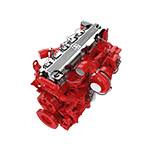Nov . 15, 2024 00:18 Back to list
can i replace just one brake drum
Can I Replace Just One Brake Drum?
When it comes to vehicle maintenance, brakes are one of the most critical components to keep in optimal condition. Over time, brake drums can wear out, leading to potential performance issues. A common question among vehicle owners is whether they can replace just one brake drum instead of replacing both. This article will delve into the implications of replacing only one brake drum, the potential risks, and best practices for maintaining your vehicle's braking system.
Understanding Brake Drums
Brake drums are part of the drum brake system, which utilizes friction to slow down or stop a vehicle. When the brake pedal is engaged, brake shoes press against the inside of the drum, creating the necessary friction to reduce speed. Like all automotive components, brake drums wear out over time. Signs of wear can include a grinding noise, vibrations when braking, or a decrease in braking performance.
Replacing One Brake Drum Is It Advisable?
While it is technically possible to replace just one brake drum, it is generally not advisable. Here are a few reasons why
1. Asymmetrical Wear Brake drums can wear unevenly. If one drum is significantly worn while the other is not, replacing just one drum may lead to imbalanced braking. This can cause the vehicle to pull to one side when braking, making it harder to control and potentially leading to safety hazards.
2. Brake Shoe Compatibility When you replace only one drum, the new drum may not match the specifications or wear characteristics of the existing drum. New drums often have different materials and designs that can affect the performance of the whole braking system.
can i replace just one brake drum

3. Cost-Effectiveness While replacing just one brake drum might seem economically favorable at first, it can lead to more frequent replacements and additional maintenance costs down the line. By addressing both drums simultaneously, you ensure uniform performance and longevity, which can save money in the long run.
4. Compromised Safety Safety should always be the top priority when it comes to vehicle maintenance. Uneven braking can not only affect the car's handling but can also increase stopping distances. In emergency situations, this can prove dangerous.
Expert Recommendations
Considering the points mentioned above, it is generally recommended to replace brake drums in pairs. Doing so ensures that both sides of the braking system work in harmony, providing improved safety and performance. Furthermore, many auto manufacturers and mechanics suggest replacing the brake shoes when you replace the drums. This is because brake shoes also wear out over time and can affect the overall braking efficiency.
Additionally, it’s essential to have the entire braking system inspected, especially when you notice issues with the brakes. This inspection should include checking brake lines, fluid levels, and other related components to ensure that your vehicle is safe and reliable.
Conclusion
In summary, while you can replace just one brake drum, it is not the best choice for the overall health and safety of your vehicle. Opting for a pair replacement ensures balanced performance, enhances safety, and can be more cost-effective in the long run. When in doubt, always consult with a qualified mechanic who can provide guidance tailored to your specific vehicle and driving conditions. Remember, consistent maintenance of your vehicle’s braking system is crucial for safe driving experiences. Prioritizing your brakes can prevent accidents and prolong the life of your vehicle, keeping you and your passengers safe on the road.
-
Scania Brake Drums: OEM Quality for Optimal Safety & Durability
NewsAug.16,2025
-
R.V.I: Advanced Remote Visual Inspection for Precision
NewsAug.15,2025
-
Discover HYUNDA: Innovative Vehicles, Equipment & Solutions
NewsAug.14,2025
-
R.V.I: Unlock Advanced Insights & Real-time Performance
NewsAug.13,2025
-
Kamaz Brake Drum: Durable & Reliable for Heavy Duty Trucks
NewsAug.12,2025
-
Heavy Duty Iveco Brake Drum - Premium Quality & Safety
NewsAug.11,2025
